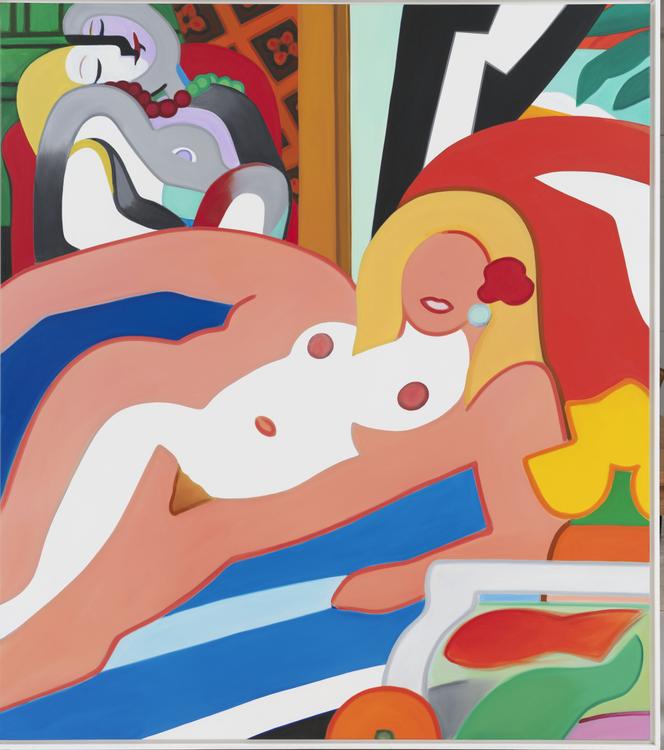


"Welcome back, Tom!" The first Tom Wesselmann (1931-2004) exhibition in Europe took place in 1966 in Paris, at the Ileana Sonnabend Gallery. Today, the American artist returns in a much larger format – 150 works, some of them monumental – at the Fondation Louis Vuitton, in a joyful scenography by architect Jean-François Bodin. Reviewing the 1966 exhibition in Le Monde, our distant colleague Jacques Michel hailed in pop art "a school of protest and irony, a kind of pictorial humor that is exerted on the social environment. Quite simply, the 'models' he has chosen are drawn from advertising, which must use a language that can be assimilated by the greatest number of people." He pointed to two major themes in Wesselmann's work: "The feminine ideal and mass-market products as presented by the advertising system across the Atlantic..."
Specifying the case of women, Michel pointed out the emphasis placed "with aberrant obviousness [on] the particularities of this mythical being: Her mouth and her breasts. It is the woman and all women at the same time, a synthesis developed for the needs of the cause by a commercial mass communication system that has assimilated Freudian theories of frustration."
Another critic of the period was Herta Wescher, who wrote for the magazine Cimaise. Of German origin, she had fled her country in the grip of Nazism, but had time to witness the birth of Berlin Dadaism, and notably knew Kurt Schwitters. When American pop art swept through Paris, her reaction was disdainful: Déjà-vu, a rehash of Dadaism; or how to miss an avant-garde because you know the previous one too well...
Yet, implicitly, the Fondation Louis Vuitton is paying an unconscious tribute to Wescher by placing pop art precisely in the lineage of Dadaism. With the addition of younger artists – including Jeff Koons – who can lay claim to pop art, there are 70 works by 35 artists, including Marcel Duchamp, Hannah Höch and Kurt Schwitters, accompanying Wesselmann during his stay in Paris.
Together with exhibition curators Dieter Buchhart and Anna Karina Hofbauer, Jean-Paul Claverie, adviser to Bernard Arnault, was able to negotiate with Tom Wesselmann's estate for large-scale loans of works rarely, if ever, on loan. The exhibition therefore not only presents Wesselmann as he has never been seen before, but also highlights his place in an art history that began before him, of course, but has seen varied and abundant inspirations since. Before being a movement, pop art is a state of mind, far more universal than its simple geographical and chronological limits would suggest, that spans several generations.
You have 15.23% of this article left to read. The rest is for subscribers only.
